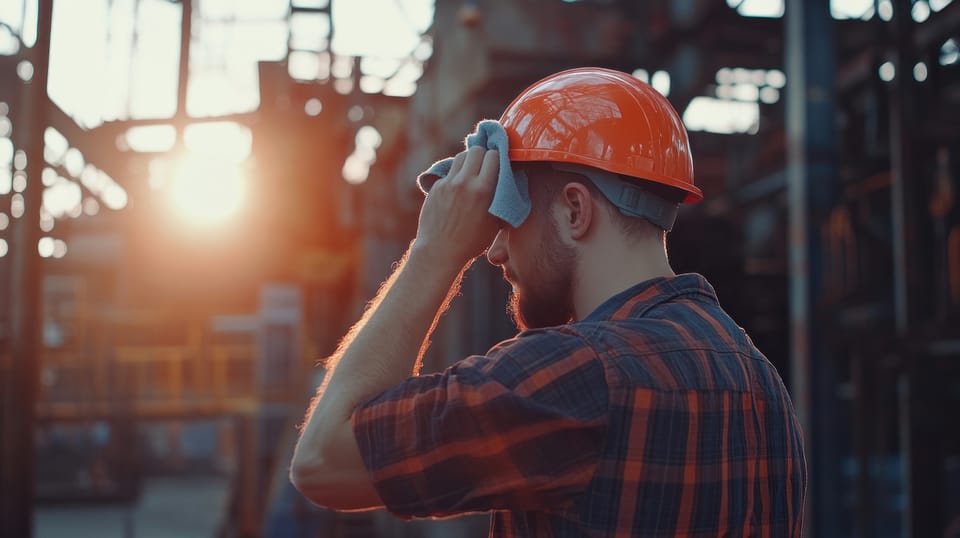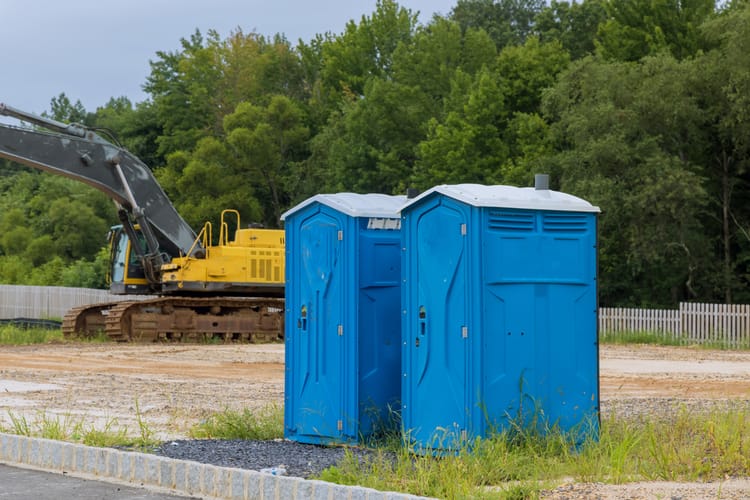Is heat putting your construction projects at risk?

We’re halfway through Q3, and the pressure’s on. Tariffs kicked in last week, recession chatter is getting louder and the heat? Brutal. Yet some contractors are feeling cautiously optimistic. This week: what’s fueling that confidence, how to keep crews safe in extreme temps and fresh ways to rethink hiring.
But first: here's who landed the $200M job constructing the White House's new ballroom.

>> Get the lead out! Watch as crafters at Sand Cast Lead Conservation Ltd. make sheets the old-fashioned way.
>> This is not a toy. If you’re planning to buy an electric truck next year, gearhead Forrest Jones says TELO’s MT1 may be for you.
>> That shouldn't be there. Bridge strike sends backhoe flipping toward truck
>> Fun marketing = viral content. Check out these construction partners leveraging trending sounds on IG to get new eyes on their page.
>> You gotta see this. The Judy Garland construction meme we didn’t know we needed from @ConstructionYeti on IG.

Research pinpoints extreme heat’s financial impact on construction
High temperatures hit construction especially hard, with outdoor labor, heat-reflecting surfaces, and heat-generating tools pushing conditions beyond the air temperature. Last month, an Arizona HVAC contractor died from extreme heat while working in an attic.
A Harvard T.H. Chan School study found heat stress reduces job site productivity by 29% to 41%, driving up costs through project delays, OSHA fines, and insurance hikes—adding up to $100 billion a year for the U.S. economy.
Retired emergency physician Ben Hippen, MD, advises crews to watch for early warning signs—red skin, sweating, confusion—and to act fast. Heat stroke, marked by mental changes and no sweating, is a medical emergency: move the person to an air-conditioned space and call 911.
Why it matters: Construction workers are especially susceptible to heat-related injuries and even death. Crew members account for 34 percent of all occupational heat-related deaths, though they represent only 6% of the workforce. (Harvard Chan School)
Economic forecasters see clouds ahead
Analysts are predicting continued declines in residential investment, which includes construction and renovations/remodels. Mark Zandi, Moody’s chief economist, expects home sales, building and prices to decline even more unless mortgage rates drop well below their current levels. The resulting year-over-year drop in residential investment could be 8% or more, according to Goldman Sachs' Chief Economist Jan Hatzius.
Why it matters: Historically, residential investment has been a reliable leading economic indicator of a looming recession. If the bulk of your business is home-related, check in with your accountant, and lock in near-term work and/or look for opportunities in other sectors. (GlobeSt.)
Where the work is
While few if any contractors are wildly optimistic about the near-term, many, according to a recent survey, are feeling guarded but positive. Their outlook is fueled by higher workloads than this time a year ago, which they expect will stoke revenue. Reflecting sector trends that show homebuilding down and commercial and infrastructure up, Mike Engstrom, owner of Engstrom Construction & Renovation, anticipates a 6-10% bump in year-over-year revenues thanks to a large accumulation of public sector initiatives offsetting a drop in housing projects in his area.
The Associated Builders and Contractors’ Construction Backlog Indicator grew to 8.7 months at midyear, 0.3 months bigger than this time last year, led by infrastructure (9.3 months) and commercial and institutional (8.9 months). “In addition to a longer backlog, contractors remain broadly optimistic, with 3 in 5 contractors expecting their sales to rise during the second half of 2025,” noted ABC Chief Economist Anirban Basu.
Why it matters: Identify the high-performing sectors where your skills are needed and be proactive about pursuing new work there. And continue to make strategic decisions that protect your financial position for the long term. (Equipment World)
Related: See why Dick Anderson Constructions’ Marty Schuma is cautiously optimistic

>> Crucial cash: Preserving Black Churches opens grant process
>> Policy pushback: Homebuilders, others support Energy Star
>> Construction fraud: Utah homeowners file thousands of complaints, losing $32 million total
>> Supply solution: New AI-powered platform automates procurement

Rethink how you hire
"No matter if you're really small or very large, you need to structure your business so that you can bring in people that can help with tasks…or portions of [them] without having the expectation that they can do the entire job right away. You're going to need six months or a year before seeing a real return on them."
- Brady Nails, MT Contracting
That’s the advice Brady Nails of MT Contracting has for dealing with the persistent labor shortage. He and "From the Fabricator" host Max Perilstein chat about working in a family business and the rise of AI in construction, too.
Thanks for reading today's edition! Have an idea for The Level? Send an email to thelevel@mynewsletter.co. We enjoy hearing from you.
Interested in advertising? Email us at newslettersales@mvfglobal.com
Was this email forwarded to you? Sign up here to get this newsletter once a week.
The Level is curated and written by Margot Lester and edited by Bianca Prieto





